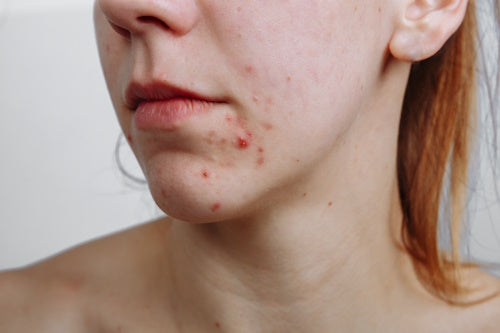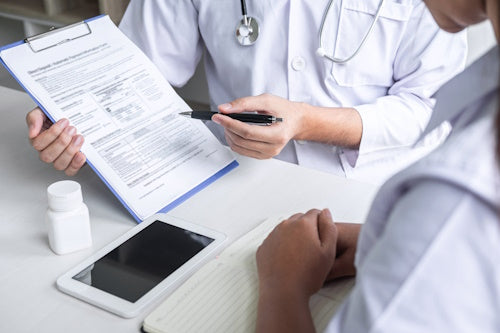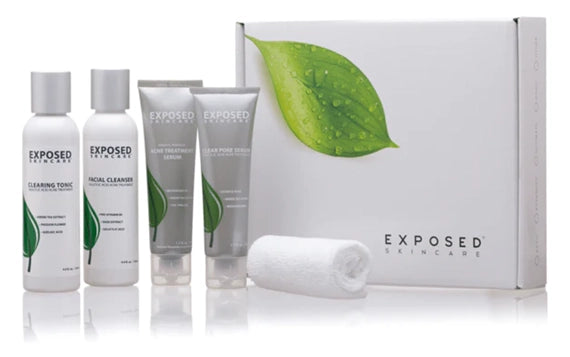Acne is a common skin condition that affects people of all ages. It occurs when hair follicles become clogged with oil and dead skin cells, leading to the formation of pimples and blackheads.
While acne can be frustrating, the redness that often accompanies it can be particularly bothersome. Luckily, there are several quick and easy ways to get rid of redness from pimples and acne. In this post, we will discuss some of the best methods recommended by skin experts.
Also read: How to choose the best acne treatment
Biggest Take-Aways:
-
Avoid touching your face and things that come into contact with it to prevent further irritation and exacerbation of redness from acne.
-
Cleanse your skin twice daily with a gentle, non-comedogenic, and salicylic acid-containing cleanser for optimal skin health and appearance.
-
Applying a warm or cold compress, using anti-inflammatory treatments, and investing in an LED face mask can help reduce redness from acne.
-
Protect your skin from the sun with broad-spectrum sunscreen, incorporating niacinamide serum and exfoliator with alpha-hydroxy or beta-hydroxy acids.

Do Not Touch Your Face Acne
The first and most crucial step is to avoid touching your acne. Picking at or squeezing pimples can lead to further irritation, which can increase redness and prolong healing time.
Also, be mindful of the things that come into contact with your face, such as cell phones, makeup brushes, and pillowcases. These items can harbor bacteria and oil that can exacerbate acne and redness.
Cleanse Morning And Evening
For optimal skin health, it's important to cleanse your skin twice daily, both in the morning and at night.
Choose a gentle and fragrance-free cleanser that is non-comedogenic, meaning it won't clog your pores. Look for a cleanser that contains salicylic acid, a peeling agent with anti-inflammatory, antimicrobial, and antifungal properties, ranging from 0.5 to 5 percent concentration.
The Exposed Facial Cleanser is an excellent option as it contains salicylic acid to unclog and shrink pores, along with other beneficial ingredients.
-
Pro-Vitamin B5 helps regulate oil production.
-
Sage extract helps prevent dryness and irritation.
Incorporating a high-quality cleanser with these ingredients into your skincare routine can help improve the overall health and appearance of your skin.
For optimal results, consider a high-quality, complete acne treatment system. Our kits include everything you need to effectively manage acne as well as nurture and care for your skin. Current savings on our Ultimate Kit is 54%.
Warm Or Cold Compress For Acne
Applying a warm or cold compress to your acne can help reduce redness and swelling. A warm compress can help to open up pores and promote drainage, while a cold compress can constrict blood vessels and reduce inflammation.
How To Prevent Redness Caused By Acne?
Prevention is the key to reducing redness caused by acne. Make sure to keep your skin clean and avoid using harsh products that can irritate or dry out your skin. Use non-comedogenic skincare products, and avoid wearing tight clothing or hats that can trap oil and sweat against your skin.
Try Anti-Inflammatory Treatments and Diet
Anti-inflammatory treatments, such as salicylic acid and benzoyl peroxide, can help reduce acne redness and acne breakouts. Additionally, incorporating anti-inflammatory foods into your diet, such as leafy greens, fish, and nuts, can also help reduce inflammation and promote clear skin.

Exfoliator For Acne Scars
Exfoliating your skin can help to remove dead skin cells and promote cell turnover, which can help to reduce the appearance of acne scars and redness. Look for a gentle exfoliator that contains alpha-hydroxy acids or beta-hydroxy acids, such as glycolic acid or salicylic acid.
Invest In An LED Face Mask
LED face masks use different wavelengths of light to treat various skin conditions, including acne and redness. Red light therapy can help to reduce inflammation and promote collagen production, which can help to improve the appearance of acne scars and redness.
How Can I Reduce The Redness Of Acne Scars?
In addition to using an exfoliator, incorporating a niacinamide serum into your skincare routine can also help reduce the redness of acne scars. Niacinamide is a form of vitamin B3 that has anti-inflammatory properties and can help to improve skin texture and tone.
Use Sunscreen
Protecting your skin from the sun is crucial when trying to reduce acne redness and prevent further damage. The sun's UV rays can increase inflammation and exacerbate acne and redness. Look for a broad-spectrum sunscreen that has an SPF of 30 or higher and apply it daily.
Talk To Your Doctor About Prescription Medication
If your acne and redness persist despite using over-the-counter treatments, talk to your doctor about prescription medication. Prescription-strength topical or oral medications can help to reduce acne redness and acne breakouts.

Tea Tree Oil For Redness From Acne
Tea tree oil is a natural remedy that has been shown to have anti-inflammatory and antibacterial properties. Applying a few drops of tea tree oil to your acne can help reduce acne redness and prevent further breakouts.
Some Acne Treatments = Redness From Acne
Some acne treatments, such as retinoids and chemical peels, can cause redness as a side effect. If you experience redness from acne treatment, it's important to follow the instructions provided by your dermatologist or healthcare provider. They may recommend reducing the frequency of use or switching to a milder formulation.
How To Get Rid Of Redness From Acne Fast?
If you need to get rid of acne redness quickly, there are a few things you can try. Applying a cold compress to the affected area can help reduce acne redness and swelling. You can also try using a green-tinted concealer to neutralize redness before applying makeup. It's important to note that these quick fixes are temporary and may not address the underlying cause of your acne and redness.
How Long Does It Take For Redness To Go Away From Acne?
The length of time it takes for redness to go away from acne can vary depending on the severity of your acne and the type of treatment you're using. Mild cases of acne may resolve in a few days, while more severe cases may take several weeks or months to improve. It's important to be patient and consistent with your treatment regimen to see the best results.
Conclusion
There are several quick and easy ways to get rid of redness from pimples and acne.
By following a consistent skincare routine, avoiding irritants, and incorporating anti-inflammatory treatments and foods into your diet, you can reduce redness and promote clear, healthy-looking skin.

















